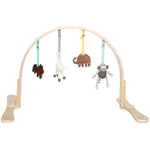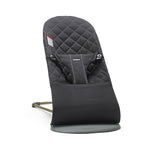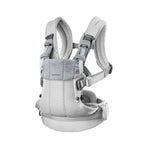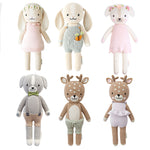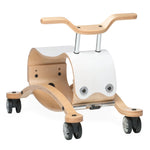The return of Sustainable, Non-toxic Grandma's Diapering for Modern Moms
You’re in the third trimester and it’s time to start preparing for the baby to arrive! One of the most important things you’ll have to buy: DIAPERS. And from your research, you’ve probably realized that there are a million different options that all look like dollar signs leaving your wallet. You never thought you’d be spending so much of your time, money, and energy on someone’s poop, right? Trust me, you’ll be celebrating it way more than you expected too!
Let me (not so subtly) convince you that cloth diapers are a fantastic option that truly deserves your consideration. You’re probably thinking, “CLOTH diapers? You mean the type of diapers my grandmother used and that require pins to keep them closed?” No, no no. We’ve come a long way and cloth diapers are now the sustainable, non-toxic option for modern moms.

Why consider cloth diapers?
- Cost Savings
- It is estimated that disposable diapers will cost around $3000 per child from birth to potty training. This is especially true if you’re looking at higher-quality disposable diaper brands.
- Cloth diapers have a larger upfront cost, but less in the long run, totaling around $1250.
- If you plan to use your cloth diapers for future children, you’re saving tons of money!
- Better for the Environment
- It is estimated that a baby will use approximately 7,000 disposable diapers. According to the EPA, decomposing a single-use diaper requires 500 years!
- With cloth diapers, you need less than 50 diapers for your child and future children! These diapers are also made of more natural materials.
- Even if you only use cloth diapers part-time, you’re saving hundreds or thousands of diapers from being thrown in the trash!
- Non-Toxic & Less Irritating
- Many disposable diapers are filled with toxic chemicals, like chlorine, sodium polyacrylate, plastics, and phthalates, that are less than ideal to have sitting on your baby’s delicate bottom. Not only do these chemicals contribute to toxic load, but they also contribute to issues like diaper rash.
- Cloth diapers are often made of natural materials, like organic cotton, that are non-toxic and less irritating to the skin.
- Head Start on Potty Training
- Since cloth diapers will feel more moist to a child than disposable diapers (which are loaded with chemicals to keep a baby feeling dry), babies are more likely to start potty training at an earlier age. The feeling of being wet allows them to make the connection between peeing and the after-effects, thereby aiding the potty training process.

What brand do we love?
There are a bunch of cloth diapering brands on the market, but the one that we love and use is the Esembly cloth diapering system.
Why Esembly?
What separates Esembly from all the other brands? A few things:
- It’s an entire cloth diapering system. You can easily purchase the inners, outers, liners, wet bags, cloth-safe washing detergent, etc. all in one place. You can even get cloth wipes if you want to go all in!
- They use 100% certified organic cotton for their inners, which means only the best quality fabric is touching your baby’s most sensitive skin.
- Their inners and outers function with a buttoning system. This is great because there are only two sizes of diapers that you’ll need to fit your baby until they are potty trained (Size 1= 7-17 lb, Size 2= 18-35 lb) AND no need for pins to keep them closed.
- Maybe the least important, but most fun– their outer patterns are super cute. I mean… your baby is going to wear a diaper every day for a while. Why not choose something cute to put on their booty?
You’ve convinced me of the benefits! So… how does it work?
Cloth diapering is honestly very similar to using a disposable diaper. With a few small differences!
- When you’re changing diapers, you’ll put on both an inner and an outer. The inner is absorbent. The outer is waterproof so that their clothes (and your floors) don’t get wet! With the Esembly diapers, you can use the different button options to find the perfect fit for your baby as they grow!
- There are additional liners that you can place into the diaper when you need some extra absorbency overnight or when the baby starts to eat solid foods and their poops change!
- Instead of throwing the diapers out after a diaper change, put them into a wet bag (if you’re out of the house) or a pail pouch (if you’re at home) to be laundered later. We put our at-home pail pouch inside of a diaper pail to keep the smell contained!
- Run your cloth diapers in the laundry every 2-3 days. If you purchase the Esembly system, they provide clear laundering instructions to keep your diapers in good shape! Don’t worry, while the baby is on a breastmilk or formula-only diet, you can throw those poopy diapers right into the wash. Once they start eating solid foods, you can put in a liner that makes it easy to discard the poop before the diapers go in the wash.
I’ll admit, cloth diapering does take a little extra work and forethought. You’ve got to do a few extra loads of laundry in a week and you’ve got to make sure that the laundry gets done so that you don’t run out of diapers.
For our family, we were willing to do a little more laundry for all the benefits that cloth diapering offers! At the very least, give cloth diapers a fair chance and consider how they might work for your family too! Remember, you can always keep a few high-quality disposables on hand as a backup!
Looking for weekly pregnancy updates & advice from industry experts?

ABOUT THE AUTHOR
Dr. Annamarie Nardini, a dedicated mom to her son Luke, practices family, pediatric, and perinatal chiropractic in Scarsdale, NY at The Homestead Family Chiropractic alongside her husband. With additional certifications from the International Chiropractic Pediatric Association (Webster Technique, Perinatal, & Pediatrics), she focuses on serving pregnant and postpartum mothers, infants, and children. Dr. Anna's mission is to empower families through education and nervous system-based chiropractic care, helping them reclaim their health.
